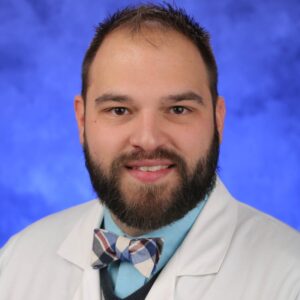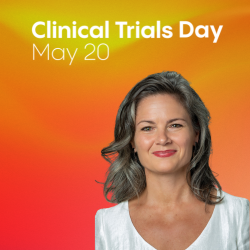Lessons learned from a new clinical research internship program held in central Pennsylvania last summer have helped prepare new and upcoming entrants for the research workforce, as well as to inform how the next generation of the program will evolve.
As reported by the Penn State College of Medicine, six interns spent 11 weeks taking active roles in existing research projects, immersing themselves in the conduct of research, and learning more about careers in clinical research at the college’s home in Hershey, Pa., alongside the Milton S. Hershey Medical Center of Penn State Health. The interns, some of whom had already completed their undergraduate studies, came from the Penn State Greater Allegheny campus in western Pennsylvania and from the Penn State University Park campus in central Pennsylvania. The internship is part of the Penn State Undergraduate Clinical Research Training Program housed at Greater Allegheny and supported by the College of Medicine and the Penn State Clinical and Translational Science Institute.
The program starts when students take HHD: 410 Clinical Research, a course offered through Penn State Greater Allegheny and taught by Andrea Stevens, Assistant Professor of Biology and Director of the Undergraduate Clinical Research Program, who noted how the course creates a career path and trajectory for students pursuing studies in biobehavioral health, psychology, and related science programs.
Throughout the program, interns received more than 65 hours of direct training. ACRP member and certificant Kevin Gardner, Jr., MS, BSN, RN, CCRC, Director of the Clinical Trials Office for the Penn State College of Medicine, told ACRP that the internship began with its participants being given copies of a study protocol and its consent form. Following that was “a presentation from the institutional review board (IRB)—what is an IRB, why do they exist, and what do they do.” Next up was a homegrown module, presented by a study coordinator familiar with the original protocol, that built off the IRB presentation and dived into the consent process.
“The best things we did with the interns was the mock consenting,” Gardner said. “All of the research professionals that I have spoken with at Penn State College of Medicine and Hershey Medical Center since we ran the internship said this is best thing we can do to train the next generation how to properly obtain consent. It is a controlled environment where the first person a new researcher is engaging in a consent conversation is not a patient. Any mistakes that might be made really do not count, because no patient will be harmed or misinformed.”
With access to a simulation center and volunteer study coordinators serving as mock patients, the internship program can replicate a clinical setting without being in the flow of a clinical space, Gardner added. “Time is on our side to practice until the learner has mastery of the skills that they need to be successful,” he said.
The mock consenting exercise was so successful, the Clinical Trials Office has decided to incorporate this activity into the onboarding of all new clinical research professionals at the College of Medicine and Penn State Health. Through the program, the Clinical Trials Office “aimed to establish a sustainable pathway to attract Penn State students to clinical research positions as they graduate from their undergraduate programs,” according to the college’s original article on the topic.
The six interns in the program’s first cohort also contributed to the study teams they worked with and each was exposed to two different types of clinical research by working on an 80%/20% split in assigned primary and secondary locations, including the Penn State Cancer Institute, Penn State Heart and Vascular Institute, Penn State Neuroscience Institute, and the Departments of Dermatology, Medicine, Ophthalmology, Otolaryngology – Head and Neck Surgery, and Pediatrics.
Every department that had an intern this past summer is asking for the opportunity to have an intern next year, Gardner said, and other departments are asking to participate. “The departments appreciated having the extra help and the enthusiasm that the interns brought with them,” he added. However, he noted, due to the much shorter secondary experience, “the interns were limited in what they were able to do during their second rotation while [IRB] approvals came through. …We are re-evaluating how we are going to do the split for next year so that both intern and department benefit.” At any rate, he explained, “They were [all] treated like they were members of the study team, which is how we were able to recruit two to stay onboard afterward.”
Among the interns who had already completed their undergraduate studies, two accepted positions at the College of Medicine and Penn State Health, while the other accepted a position at the University of Pittsburgh Medical Center, choosing to return home to western Pennsylvania.
While this was the College of Medicine’s first year hosting an internship cohort, Penn State has partnered with Allegheny Health Network to provide internship opportunities in prior years—a collaboration that continues to this day. Penn State also began a partnership with Clinical Research Strategies LLC for clinical research experience and internships.
Gardner noted that the demand level for clinical research internships through Penn State “has been growing” on both the professional (non-investigator) and employer sides. “The growing research portfolio of Penn State College of Medicine and Penn State Health means there will be a continued demand for competent clinical research professionals,” he said. The internship program “not only gave the interns opportunities to see participant-facing roles, but also the other operational and administrative roles. It takes a village to operate a successful research enterprise, and an internship program [means we can] give students … a ‘taste’ of the many opportunities that await them.”
“It is great to see how the research community of the College of Medicine and Penn State Health views this as an opportunity to teach and mentor the next generation of clinical researchers,” Gardner concluded. “It is not just [about teaching] students—[it’s] an investment in our future workforce [and] our future colleagues.”
Edited by Gary Cramer



